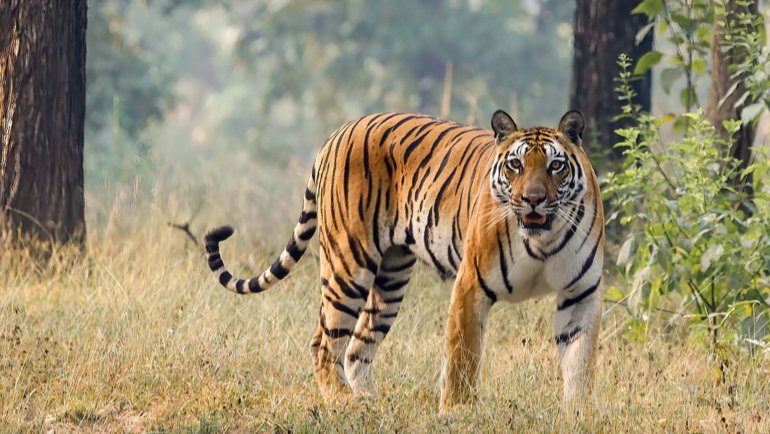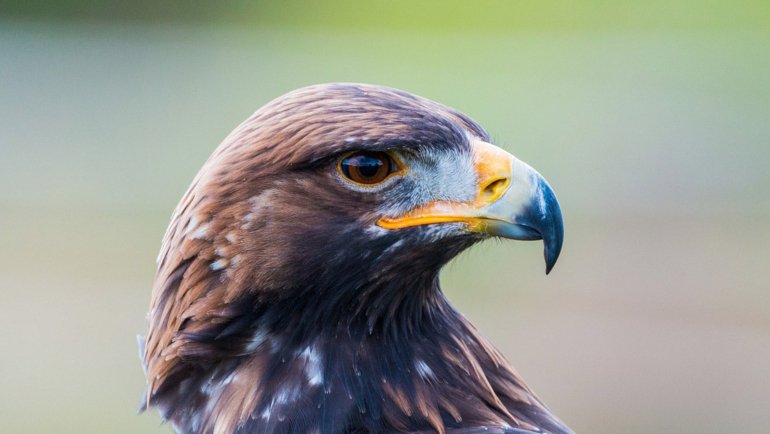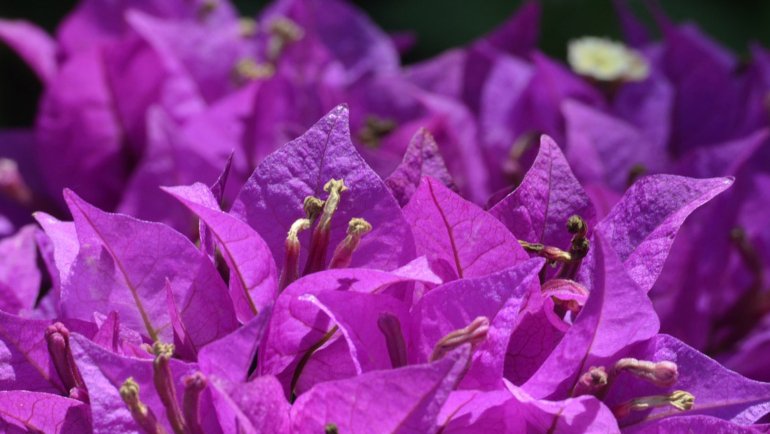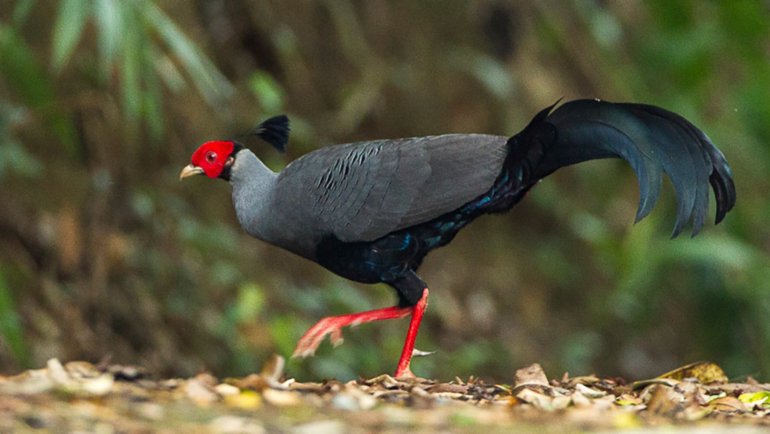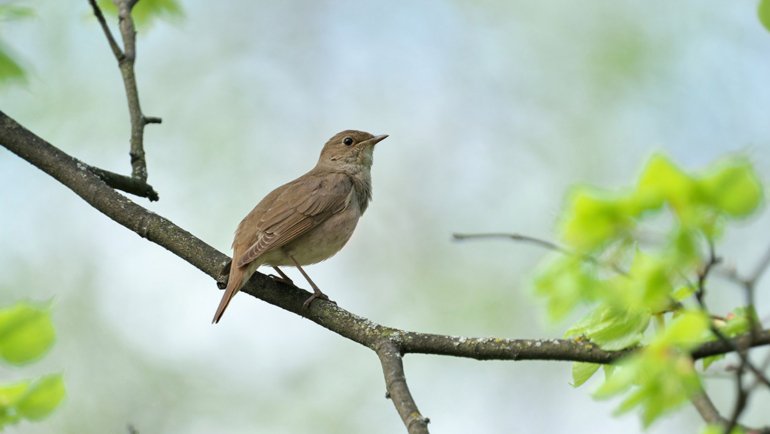In the heart of the Arabian Peninsula lies Saudi Arabia, a land steeped in history, culture, and natural wonders. Soaring high above this majestic landscape is the Saker Falcon, the national bird of Saudi Arabia.
This bird of prey stands not just as a symbol of the country’s rich natural heritage but also embodies the qualities of courage, strength, and nobility deeply rooted in Saudi culture.
Join us as we unveil the captivating world of the Saker Falcon, a bird revered not only for its breathtaking flight and hunting skills but also for its unique role in the cultural heritage of Saudi Arabia.
Quick Info About The Saker Falcon
| Scientific Name: | Falco cherrug |
| Average Size: | 45–57 cm (18–22 in) |
| Average Wingspan: | 97–126 cm (38–50 in) |
| Average Weight: | Males: 730–990 g (26–35 oz); Females: 970–1,300 g (34–46 oz) |
| Average Lifespan: | Up to 20 years in the wild |
| Geographical Range: | Central Europe to Manchuria; partial migrant |
| Habitat: | Open grasslands, semi-deserts, steppes |
| Conservation Status: | Endangered (IUCN Red List) |
Meet The Saker Falcon, National Bird of Saudi Arabia
The Saker Falcon, known for its imposing presence and hunting prowess, is an integral part of the Saudi Arabian natural and cultural landscape.
The Saker Falcon has a robust build with variable plumage. Typically, it exhibits a brown upper body with streaked underparts. The falcon’s head is relatively large, with dark eyes and a powerful beak.
As with many birds of prey, female Saker Falcons are larger than their male counterparts, a characteristic known as reverse sexual dimorphism.
One of the Saker Falcon’s most notable traits is its incredible speed in level flight, reaching up to 150 km/h (93 mph), and its ability to execute high-speed dives or “stoops.”
In the ecosystem, the Saker Falcon is a top predator. It primarily feeds on rodents and birds, playing a crucial role in controlling these populations. Predators of the Saker Falcon are limited, mainly due to its position at the top of the food chain. However, its eggs and chicks may be threatened by other large birds or mammals when left unattended.
The Saker Falcon’s role extends beyond the ecological; it is deeply intertwined with Saudi Arabian culture, especially in the traditional sport of falconry. This practice, symbolizing a harmonious relationship between humans and nature, highlights the cultural importance of the Saker Falcon in Saudi Arabia.
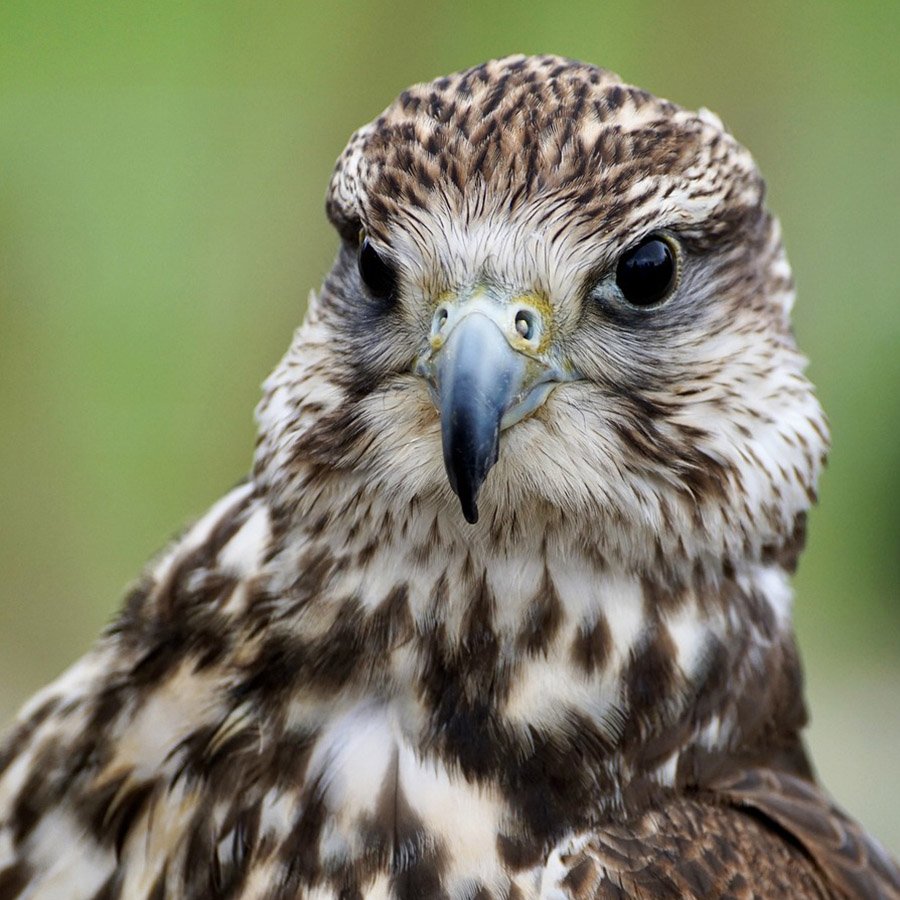
Where Does The Saker Falcon Live?
The Saker Falcon is a versatile bird, capable of thriving in a variety of habitats. Its natural range spans from Central Europe across the Palearctic to Manchuria. In Saudi Arabia, these falcons are well-adapted to the country’s desert and semi-desert environments, making use of the open landscapes that mirror their preferred habitats of open grasslands and steppes.
While some Saker Falcons are resident birds, others are partial migrants. In Europe and West Asia, juveniles often migrate, while adults tend to be more resident.
The migratory populations of Saker Falcons from these regions typically spend the winter in the Sahel region of Africa. On their migratory paths, they cross the Middle East and Arabian Peninsula, including Saudi Arabia, where they are revered and protected.
Why and When Did The Saker Falcon Become The National Bird of Saudi Arabia?
The Saker Falcon’s designation as the national bird of Saudi Arabia is deeply rooted in the nation’s culture and history. Revered for its strength, speed, and hunting prowess, the Saker Falcon symbolizes the values of courage, nobility, and freedom – qualities highly esteemed in Saudi Arabian society. The bird’s keen eyesight and remarkable hunting ability are seen as metaphors for vision and perseverance.
Falconry, involving the Saker Falcon, has been an integral part of Arabian heritage for thousands of years. This traditional sport reflects the deep connection between the people and the natural world, emphasizing respect for the environment and the skills of hunting.
The exact date when the Saker Falcon was officially recognized as the national bird is not clear, but its significance in the cultural and natural heritage of Saudi Arabia has long been acknowledged.
There have been no significant controversies or debates regarding its status as a national symbol. Instead, the Saker Falcon is celebrated and honored for its cultural and historical importance in Saudi Arabia.
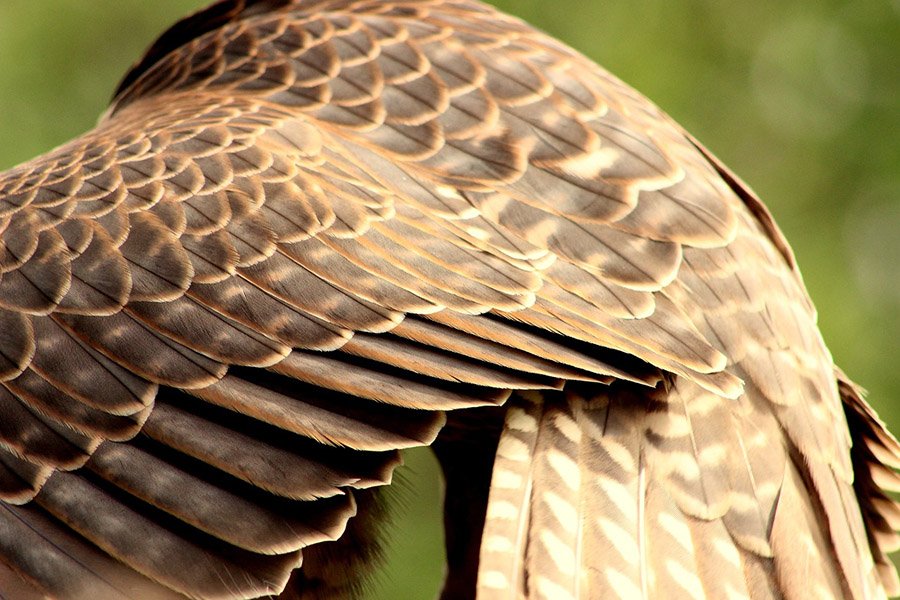
Where is The Saker Falcon Featured in Saudi Arabia?
In Saudi Arabia, the Saker Falcon is more than a national bird; it is a symbol of cultural identity and heritage. While it is not featured on the national flag or banknotes, its presence is felt strongly in the cultural and social realms of the country.
The Saker Falcon is prominently featured in falconry, a sport that is not only a popular pastime but also a significant cultural tradition. This tradition is celebrated in festivals and events across the country, highlighting the bird’s esteemed status. Additionally, the Saker Falcon often appears in Saudi Arabian art, literature, and folklore, symbolizing traits such as strength, endurance, and freedom.
The reverence for the Saker Falcon in Saudi Arabia goes beyond mere admiration; it represents a deep, historical bond between the people and the natural world, a symbol of the nation’s rich heritage and enduring cultural values.
Names of The Saker Falcon
The Saker Falcon, scientifically known as Falco cherrug, is recognized by various names across different regions. In Arabic, it is often referred to as “الصقر” (Al Saqr), which translates to “the falcon.” This term is widely used in Saudi Arabia and the broader Middle Eastern region. In English, it is known as the Saker Falcon, a name derived from its scientific classification.
In different cultures, the Saker Falcon may have various local and folk names that reflect its significance in those regions. These names often embody the bird’s characteristics of strength, speed, and hunting prowess. However, “Saker Falcon” remains the most universally recognized name for this species.
Is The Saker Falcon Endangered?
The Saker Falcon is currently classified as Endangered by BirdLife International. The primary threats to this species include habitat degradation, illegal trapping for falconry, and exposure to pesticides. The decline is particularly pronounced in Central Asian breeding grounds.
Conservation efforts for the Saker Falcon are being implemented on several fronts. These include international regulations to control the trade of wild-caught falcons, habitat protection measures, and breeding programs.
In some regions, like Hungary, the Saker Falcon population is relatively abundant and well-protected, showcasing successful conservation models. There are also captive breeding projects in the United States, Canada, and Europe, aimed at increasing the population of these falcons and reintroducing them into the wild.
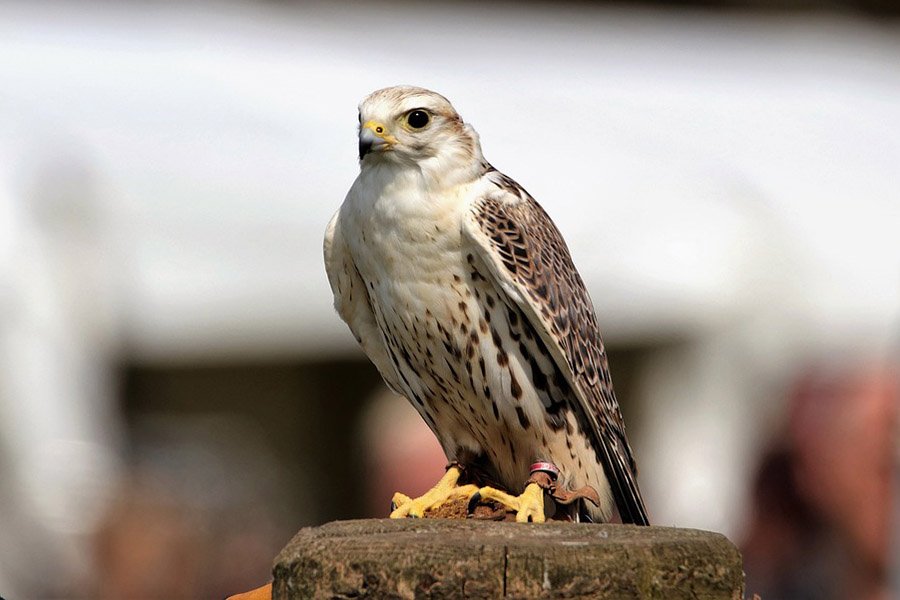
Interesting Facts About The Saker Falcon
- Speed and Hunting: The Saker Falcon is renowned for its speed, being the second fastest bird in level flight, capable of reaching 150 km/h (93 mph). It hunts primarily by horizontal pursuit rather than high-speed dives.
- Cultural Significance: In Saudi Arabian culture, the Saker Falcon symbolizes strength and nobility and is deeply associated with the traditional sport of falconry.
- Nesting Habits: Unlike many birds, Saker Falcons often do not build their own nests but use old stick nests created by other bird species.
- Adaptation: These falcons have adapted to a variety of habitats, from semi-deserts to grasslands, showing remarkable versatility.
- Diet: Their diet primarily consists of rodents and birds, reflecting their role as a predator in controlling these populations.
- Vulnerability to Disease: Saker Falcons are susceptible to avian influenza, but studies show they can be protected through vaccination in captivity.
- Hybridization for Pest Control: Saker Falcons are sometimes hybridized with Peregrine Falcons for use in pest control, exploiting their speed and agility to manage larger bird populations considered pests.
Other Beautiful Birds Native To Saudi Arabia
Saudi Arabia’s diverse landscapes are home to a variety of bird species, each adding to the country’s rich avian biodiversity. Here are five notable birds native to or commonly found in Saudi Arabia:
- Arabian Bustard (Ardeotis arabs): A large and impressive bird, known for its size and striking appearance, often found in the open grasslands.
- Asian Houbara (Chlamydotis macqueenii): A symbol of Arabian wildlife, this bird is known for its unique mating dance and is often found in desert environments.
- Arabian Woodpecker (Dendrocopos dorae): Unique to the region, this woodpecker is notable for its distinctive pecking sound and plays a crucial role in the ecosystem as a pest controller.
- White-cheeked Bulbul (Pycnonotus leucogenys): Common in urban areas and gardens, this bird is known for its melodious song and striking appearance.
- Lappet-faced Vulture (Torgos tracheliotos): A large bird of prey, playing an important role in the ecosystem as a scavenger, thus helping to maintain environmental balance.
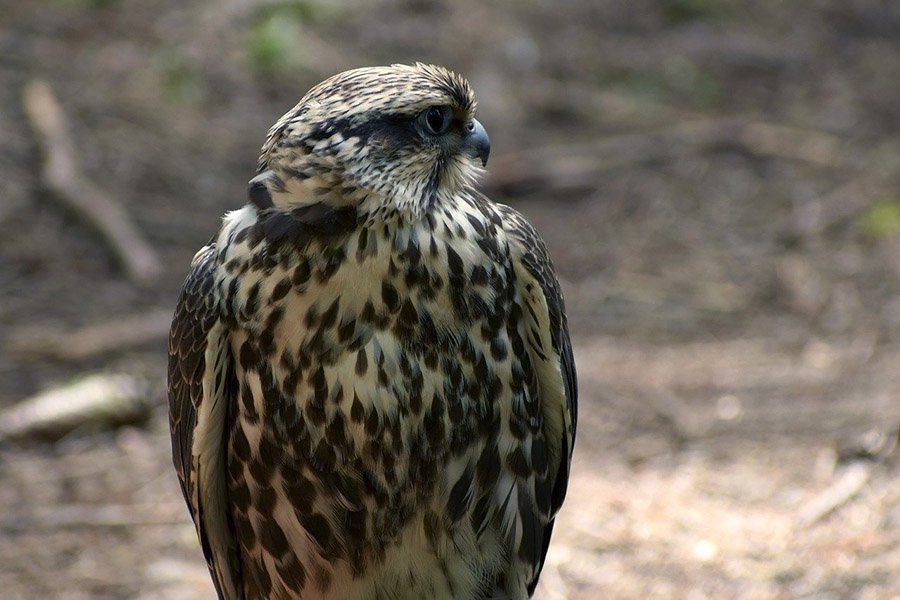
What Is Another National Animal of Saudi Arabia?
Apart from the Saker Falcon, the Arabian Camel (Camelus dromedarius) is another iconic national animal of Saudi Arabia. This animal is deeply embedded in Saudi culture, history, and daily life. Known for its endurance and ability to survive in harsh desert conditions, the Arabian Camel has been an integral part of Bedouin life for centuries, used for transport, food, and as a vital resource in the arid desert.
Symbolizing patience, resilience, and survival, the Arabian Camel is celebrated in Saudi Arabian folklore, poetry, and art. Its importance is also reflected in the numerous camel festivals and races held across the country, showcasing the deep connection between the Saudi people and this remarkable animal.
Frequently Asked Questions
What makes the Saker Falcon a good hunter?
The Saker Falcon is an excellent hunter due to its incredible speed, sharp talons, and keen eyesight, which allow it to spot and swiftly capture its prey.
Is falconry still practiced in Saudi Arabia?
Yes, falconry is a revered tradition in Saudi Arabia, deeply rooted in the country’s culture and heritage. It continues to be practiced and celebrated, with the Saker Falcon being one of the preferred species for this sport.
How fast can a Saker Falcon fly?
The Saker Falcon is the second fastest bird in level flight, capable of reaching speeds up to 150 km/h (93 mph).
What are the threats to the Saker Falcon’s survival?
The main threats to the Saker Falcon include habitat degradation, illegal trapping for falconry, and exposure to pesticides, all of which have contributed to its endangered status.
Are there conservation efforts for the Saker Falcon in Saudi Arabia?
Yes, Saudi Arabia participates in various conservation efforts to protect the Saker Falcon, including habitat protection, regulation of falconry practices, and collaboration with international conservation organizations.

